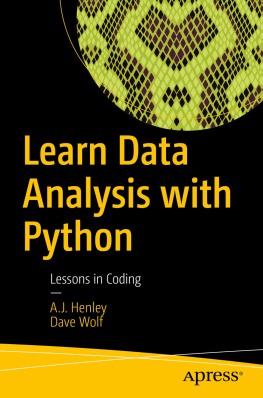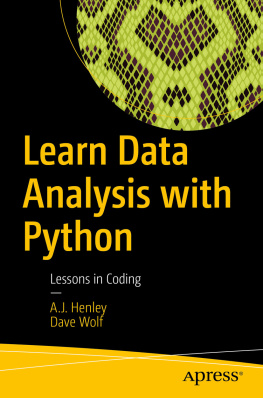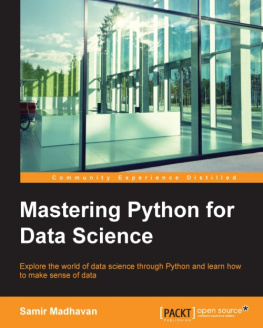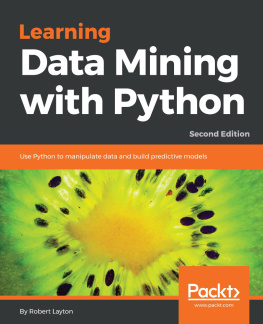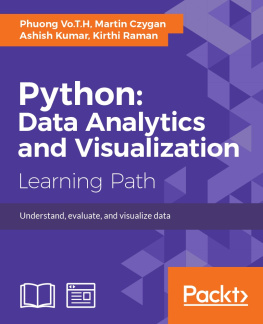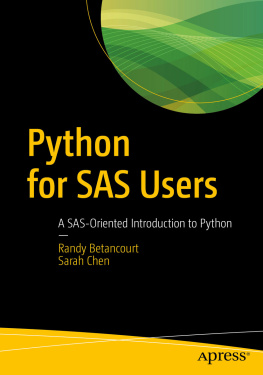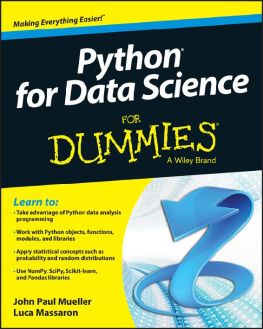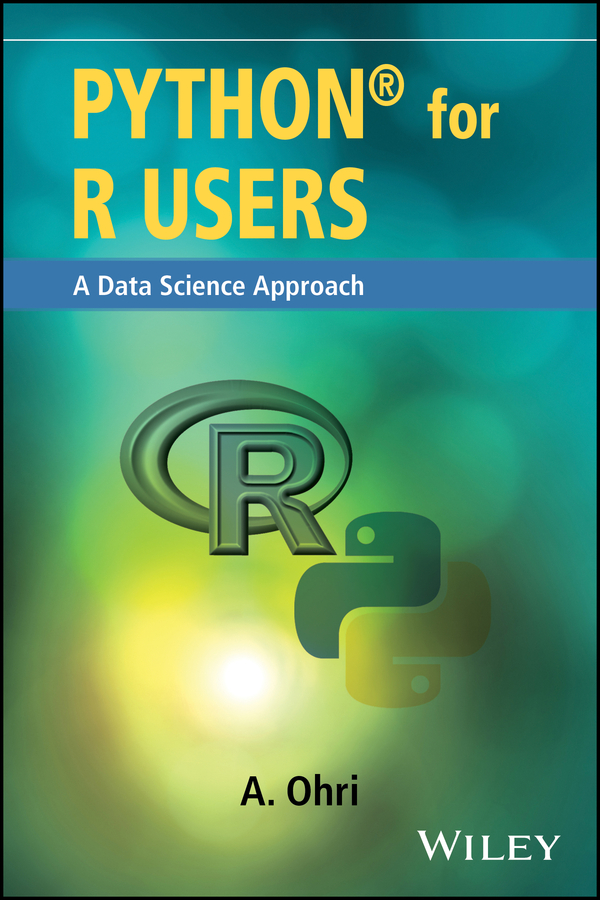Ajay Ohri - Python for R Users: A Data Science Approach
Here you can read online Ajay Ohri - Python for R Users: A Data Science Approach full text of the book (entire story) in english for free. Download pdf and epub, get meaning, cover and reviews about this ebook. year: 2017, publisher: Wiley, genre: Home and family. Description of the work, (preface) as well as reviews are available. Best literature library LitArk.com created for fans of good reading and offers a wide selection of genres:
Romance novel
Science fiction
Adventure
Detective
Science
History
Home and family
Prose
Art
Politics
Computer
Non-fiction
Religion
Business
Children
Humor
Choose a favorite category and find really read worthwhile books. Enjoy immersion in the world of imagination, feel the emotions of the characters or learn something new for yourself, make an fascinating discovery.

- Book:Python for R Users: A Data Science Approach
- Author:
- Publisher:Wiley
- Genre:
- Year:2017
- Rating:4 / 5
- Favourites:Add to favourites
- Your mark:
Python for R Users: A Data Science Approach: summary, description and annotation
We offer to read an annotation, description, summary or preface (depends on what the author of the book "Python for R Users: A Data Science Approach" wrote himself). If you haven't found the necessary information about the book — write in the comments, we will try to find it.
The definitive guide for statisticians and data scientists who understand the advantages of becoming proficient in both R and Python
The first book of its kind, Python for R Users: A Data Science Approach makes it easy for R programmers to code in Python and Python users to program in R. Short on theory and long on actionable analytics, it provides readers with a detailed comparative introduction and overview of both languages and features concise tutorials with command-by-command translationscomplete with sample codeof R to Python and Python to R.
Following an introduction to both languages, the author cuts to the chase with step-by-step coverage of the full range of pertinent programming features and functions, including data input, data inspection/data quality, data analysis, and data visualization. Statistical modeling, machine learning, and data miningincluding supervised and unsupervised data mining methodsare treated in detail, as are time series forecasting, text mining, and natural language processing.
Features a quick-learning format with concise tutorials and actionable analytics
Provides command-by-command translations of R to Python and vice versa
Incorporates Python and R code throughout to make it easier for readers to compare and contrast features in both languages
Offers numerous comparative examples and applications in both programming languages
Designed for use for practitioners and students that know one language and want to learn the other
Supplies slides useful for teaching and learning either software on a companion website
Python for R Users: A Data Science Approach is a valuable working resource for computer scientists and data scientists that know R and would like to learn Python or are familiar with Python and want to learn R. It also functions as textbook for students of computer science and statistics.
A. Ohri is the founder of Decisionstats.com and currently works as a senior data scientist. He has advised multiple startups in analytics off-shoring, analytics services, and analytics education, as well as using social media to enhance buzz for analytics products. Mr. Ohris research interests include spreading open source analytics, analyzing social media manipulation with mechanism design, simpler interfaces for cloud computing, investigating climate change and knowledge flows. His other books include R for Business Analytics and R for Cloud Computing.
Ajay Ohri: author's other books
Who wrote Python for R Users: A Data Science Approach? Find out the surname, the name of the author of the book and a list of all author's works by series.

